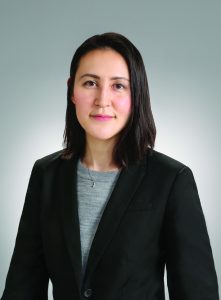By Lisa Iwaya, Head of Marketing, Electronic Trading, Phillip Securities Japan & Sedar Armutcu, Head of Institutional Execution Services, Phillip Securities Japan
The article provides a snapshot of the current trading environment in Japan and potential opportunities that exist for foreigners trading Japanese equities and futures in 2019, including the new settlement cycle, margin trading in PTSs, Futures Dark Pools. It makes brief references to Phillip Securities Japan and its involvement in this environment as well. Many Japanese companies are looking forward to the 2020 Olympic Games as an opportunity to showcase their wares and promote the potential for Japan, despite the fact that historically Japan has found it challenging to spark excitement. Burdened by decades of low interest rates and an aging population, Japanese markets have struggled to keep up with international counterparts especially in the area of market regulation. 2018 was challenging for most brokers, especially over the tail end, despite the near 27-year high in the popular Nikkei index. In 2018 we saw some significant changes to the regulatory environment. Most notable amongst these were changes to the High Speed Trading (HST) registration rules and the ETF Market Making Program introduced by the Tokyo Stock Exchange to encourage more foreign participation and support from overseas market making firms.
HST REGISTRATION
In Japanese markets, the most active high frequency firms are foreign market making firms. However, the Japanese financial regulatory body, JFSA, from April 2018, launched a requirement for all high frequency trading firms, referred to as High Speed Trading (HST) firms in Japan, to register with the JFSA in order to regulate the impact on the market by these players. Due to the stringent requirements, this unfortunately, has discouraged new high frequency entrants from staring operations and it is expected that requirements are set to become even more stringent in 2019. On the bright side, how- ever, there do exist workarounds so that foreign firms can still use low-latency infrastructure and strategies in the market such as by utilising shared servers/taps which exempt them from registration.
ETF MARKET MAKING PROGRAM

T+2 SETTLEMENT
In response to developments in other major markets, The Tokyo Stock Exchange will switch to T+2 settlement from T+3 settlement on Tuesday, July 16th 2019. Trading members of the TSE, including our company, have already started testing with the clearing organisation JSCC and the central 
RETAIL MARGIN TRADING ALLOWED IN PTS FOR FIRST TIME
It is estimated that around 30 to 40% of all retail trading in Japan done through retail broker mar- gin accounts. Brokers have been restricted from sending orders on these accounts to any other venue other than the main public exchange, TSE. The two main PTSs in Japan, SBI JapanNext and Chi-X Japan, despite being in operation for many years and bringing vari- ous innovations to the marketplace like night time trading have not broken through the psychological 10% market share barrier. This has allowed TSE to protect its market share contrary to other markets like Australia where Chi-X Australia has been relatively more successful.
Pairing with the switch to T+2 settlement cycle, PTSs in Japan will be allowed to accept orders from retail margin traders from the summer of 2019. This may be a plus for players who utilize strategies that take advantage of fragmentation of market liquidity, although the full effects most think will still take some time to fully realise.
DERIVATIVES DARK POOLS
In Japan, Equities dark pools became popular because they provided anonymity for traders
who wanted to hide their tracks. Dark pools for derivatives products, on the other hand, were seen more of a niche service as traders had less similar reasons for anonymity. We think that dark pools for derivatives in Japan, however, may receive more attention going forward as they provide an oppor- tunity for cost savings through the opportunity to trade inside the public bid-ask spread and smaller tick sizes compared to the regular tick size on the exchange.
For the first time, the Japanese markets will be shut for 10 consecutive days during the extended annual Golden Week holiday in May this year. The reason for this is the current Emperor’s abdication from his throne. Japanese Exchanges will be closed but other global markets will be open. Investors in Japan are being warned of a possibly major market price fluctuation when the market in Japan re-opens: an interesting development for Japanese market players.

